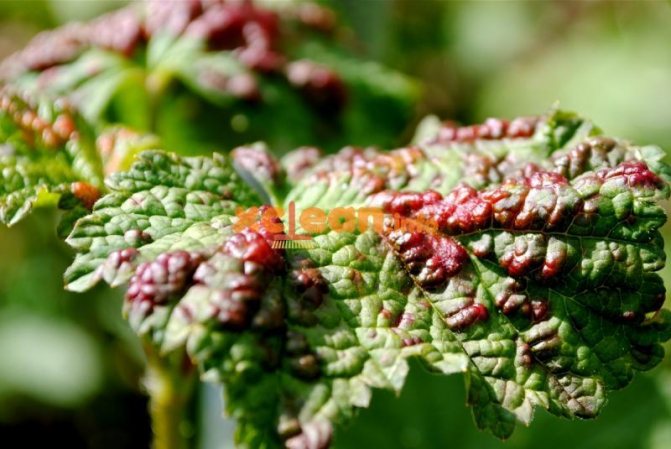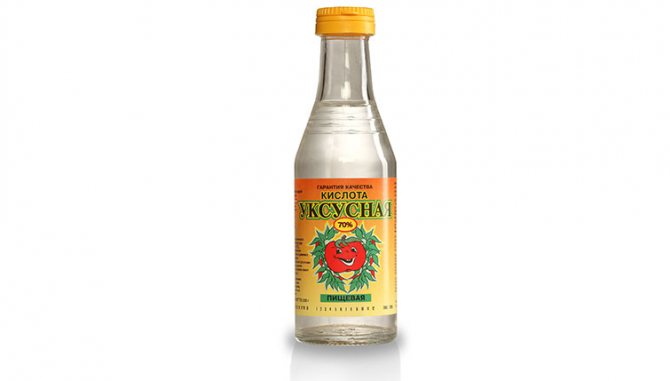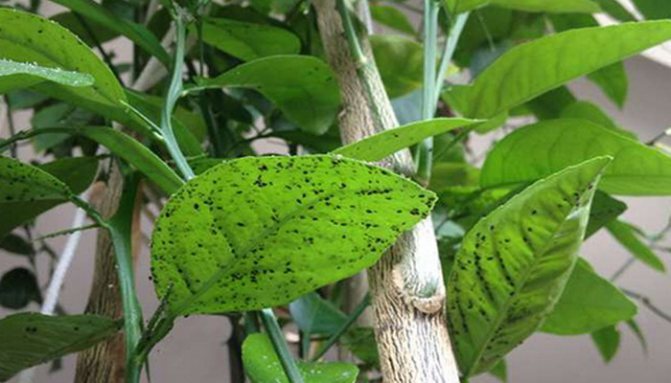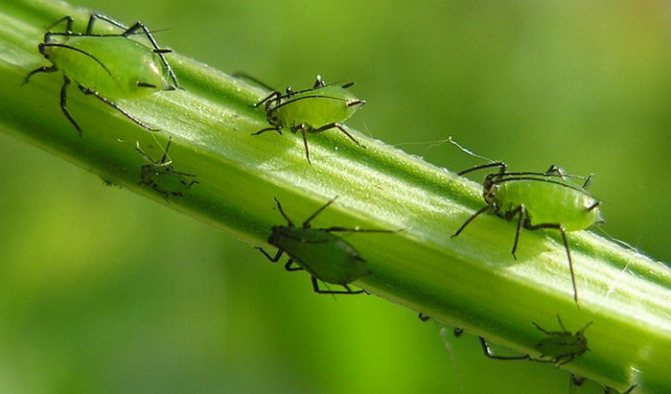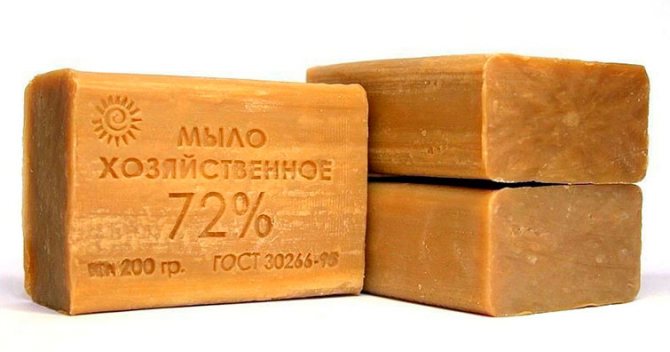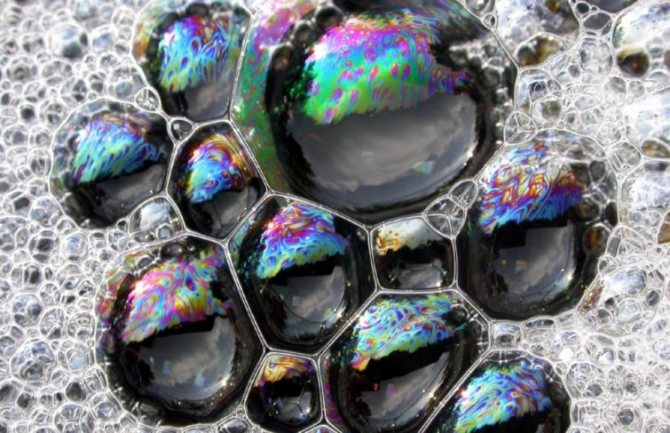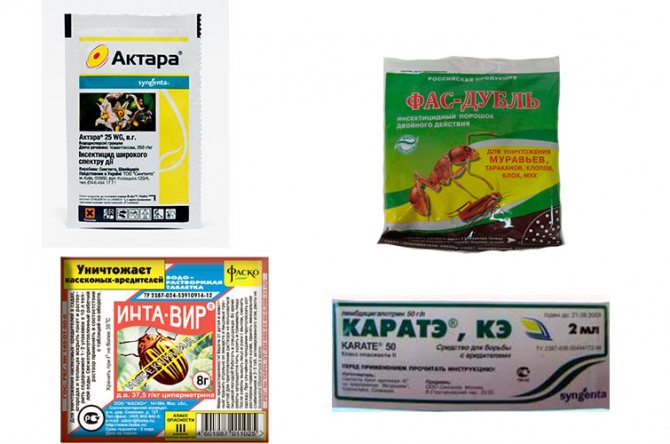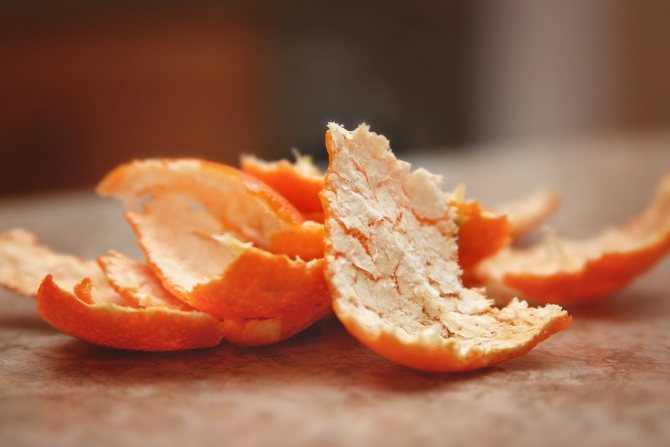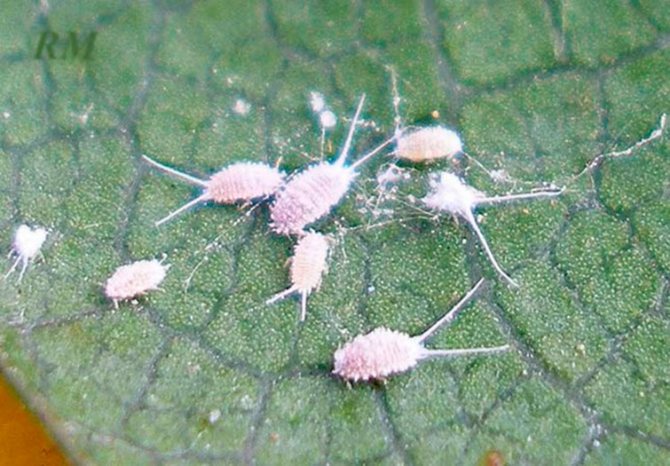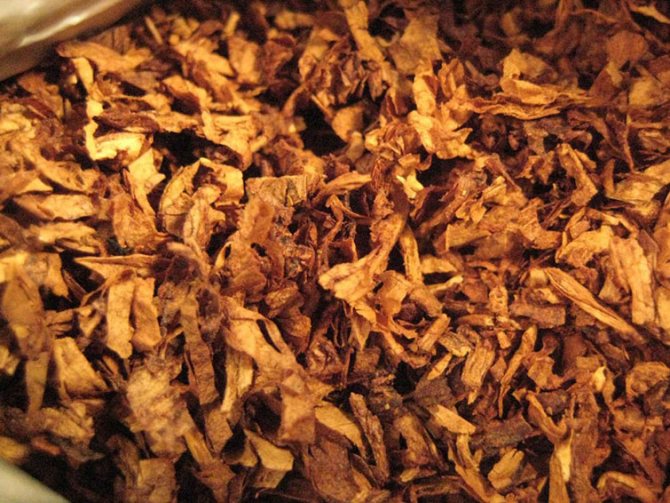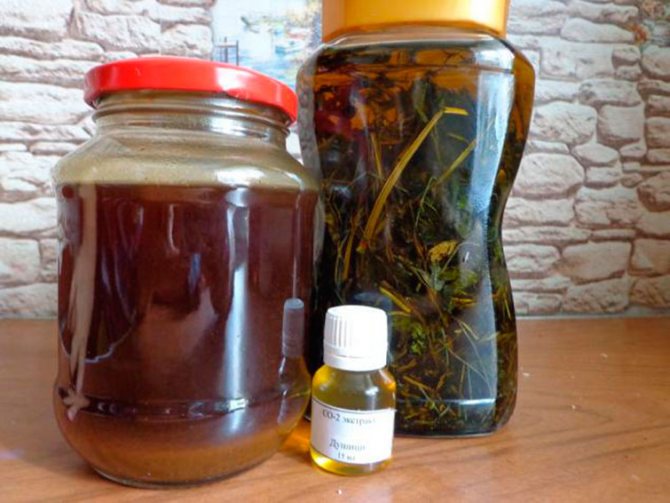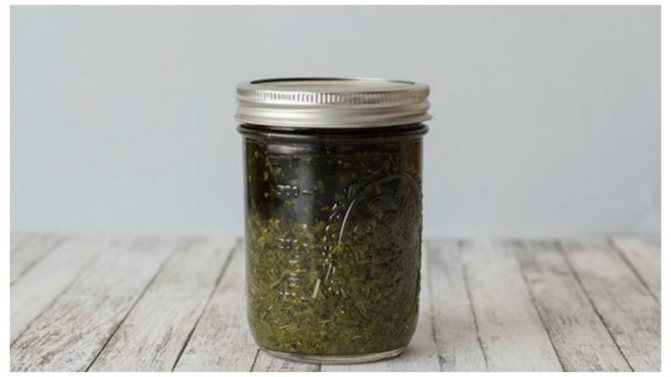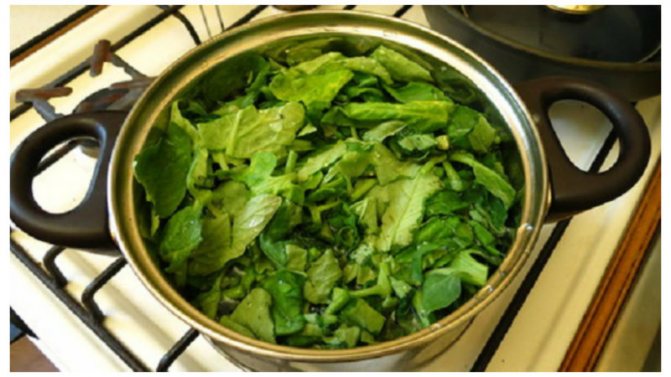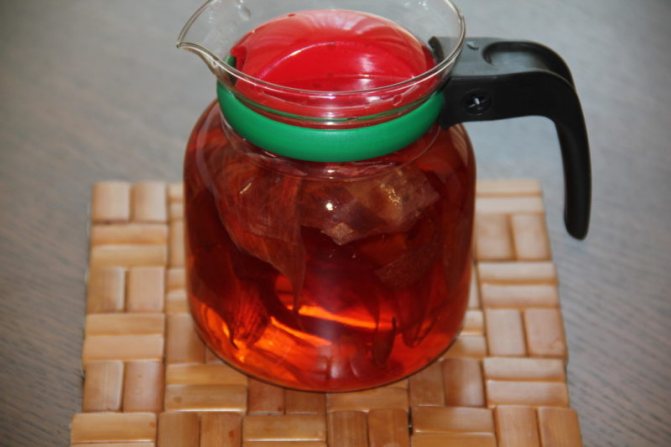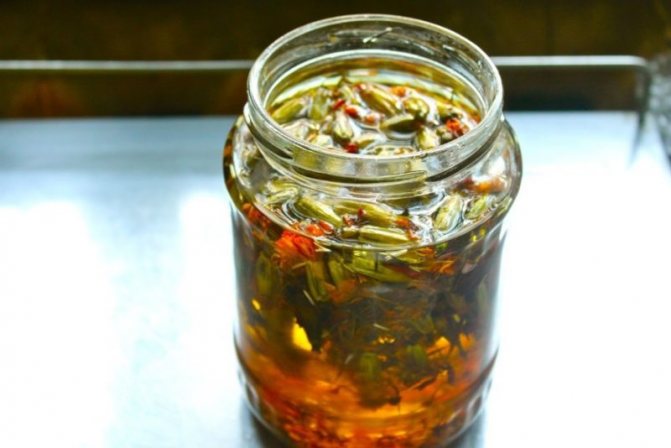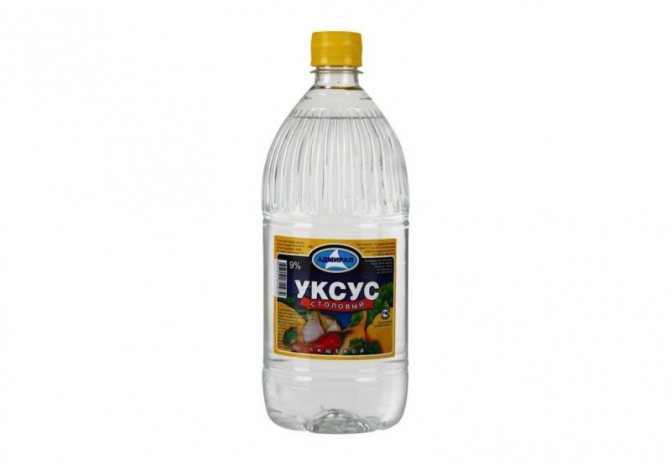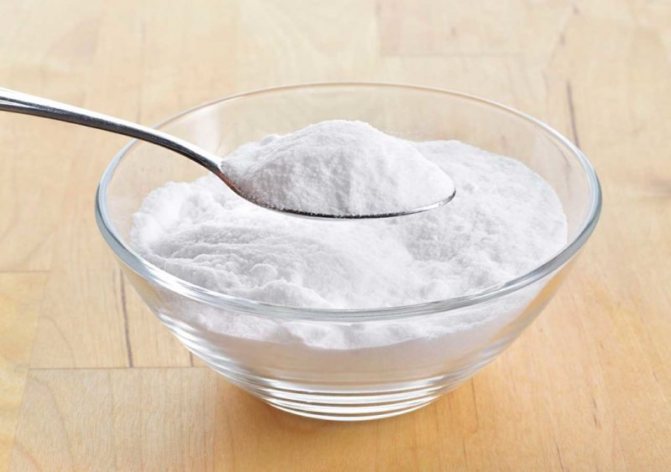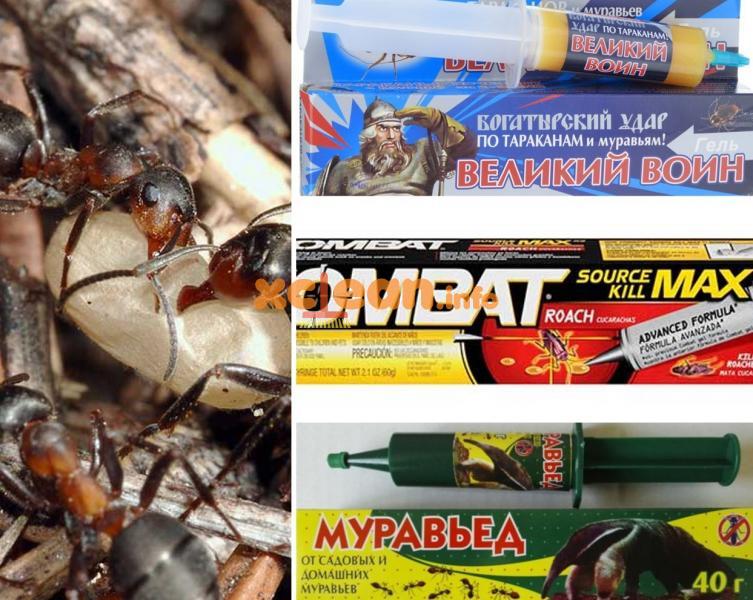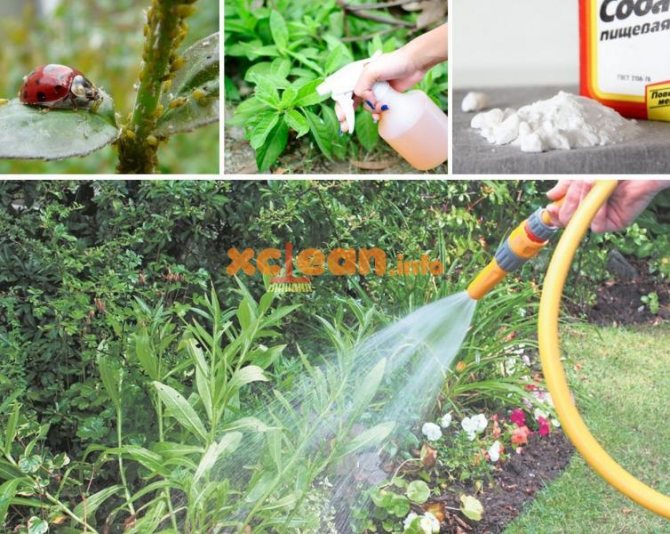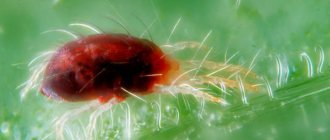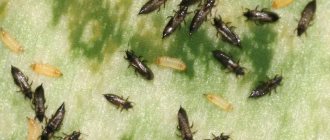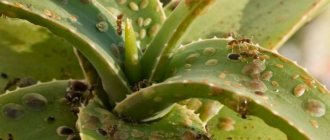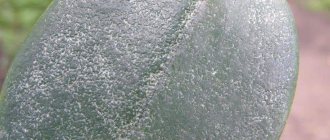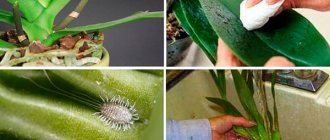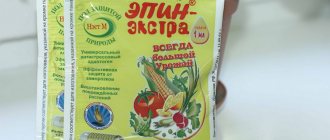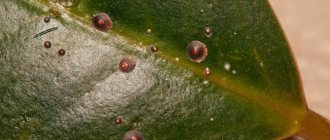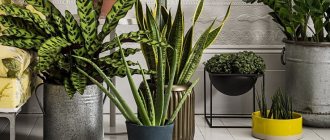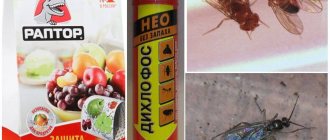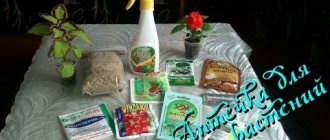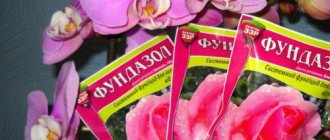Aphids can have a detrimental effect on a wide variety of plants, trees and shrubs, the main harm that it causes them is as follows:
- Suction of fluids from plants, which leads to their gradual wilting.
- Irreversible deformation of foliage and part of the shoots.
- The spread of various fungal diseases.
- Deterioration of the general condition of cultivated crops.
- Decreased yield.
- Weakening of plants, which can lead to subsequent death in winter.
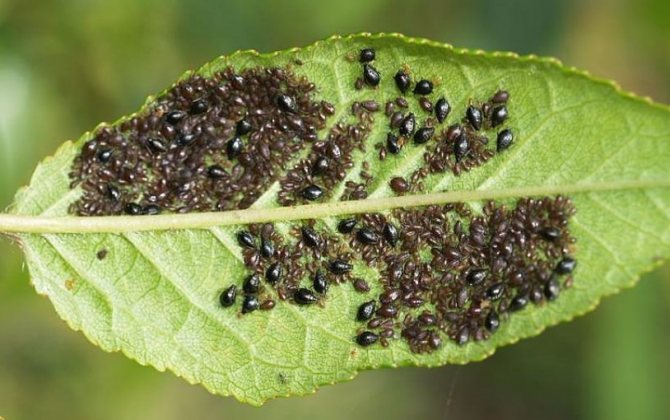
What plants do aphids live on?
The pest is not attracted to all types of flowers. Parasites feed on plant sap, so specimens with soft leaves (violets, primroses, begonias) are chosen for life. In low humidity conditions, insects are found on orchids, cyclamens and spathiphyllums. Aphids are very fond of indoor roses and chrysanthemums.
It is difficult to pierce the tops of palm trees, dracaena with a proboscis, so the colonies bypass them. The pest rarely attacks adult ficuses; seedlings of small-leaved and dwarf varieties are at risk. The lack of laminae and the thick, smooth skin of succulents make them immune to parasite attacks.
What is this insect and why is it dangerous?
White aphids are easy to recognize if they have settled on an ornamental plant. She has a teardrop-shaped light body, reaching a length of 0.5 cm. The oral apparatus is represented by a proboscis. There are antennae on the head that act as sensors.
Outwardly, the shape of the body is drop-shaped. If you examine an individual under a microscope, you can see that its mouth apparatus consists of a proboscis - it pierces the surface of plants (shoots or leaves). The head is equipped with long antennae - it is on them that tactile sensors are located.
There are individuals with and without wings. Winged aphids reproduce asexually. Scientists believe that the appearance of wings in insects is due to the fact that in the process of evolution they were forced to flee from ladybirds and ground beetles. Wingless aphids change several owners during their life. They are born bisexual, mate, lay eggs and after 7-14 days new offspring appear from them.
Important! White aphid destroys indoor and garden plants, as well as plantings in the beds. Insects enter the room from the street. The danger also lies in the fact that aphids carry viral plant diseases.
Causes and signs of aphids
The pest loves dry, warm air and lives well in human habitation. The reasons for the appearance of aphids in the house are:
- new plants (bouquets, potted plants);
- contaminated land;
- open doors, a window without a mosquito net;
- ants.
It is easy to see pests with the naked eye. Parasites settle on the underside of foliage, accumulate in dense colonies, and leave yellow bite marks. Affected plates wrinkle, curl up like a tube, soot spots and a sticky layer appear. Weakened buds do not open, wither. Young shoots do not develop, deform and wither.
In a neglected state, the plant looks sick, loses the gloss of greenery, decorative color.
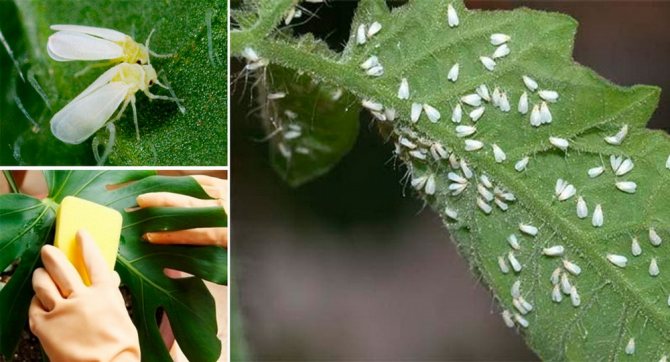

How to cultivate the land?
Experienced gardeners have long noted wood ash as a means of killing aphids.The use of furnace ash significantly reduces the number of pests. It is enough just to scatter it under the potato bushes on top of the soil.
Other means you can use:
- Garlic infusions and onion skins;
- Infusion of tobacco;
- Potassium permanganate solution medium pink in color;
- Copper sulfate;
- Insecticides: Aktaru, Force, Chrolpirifos, Regent, Thunder 2.
Types of aphids on flowers
The tiny insect has a small (4-7 mm) oval body and a piercing-sucking mouth. Pests pierce the skin of a leaf with a proboscis, feed on plant sap. In nature, there are thousands of varieties of aphids, which differ in size and color (white, black, green). Almost all species parasitize flowers in a dwelling, but more often:
- greenhouse;
- nymphaean;
- peach.
Before removing aphids from indoor plants, you need to know the biology of the pest. Insects do not need males to reproduce. One adult female lays nearly 100 larvae at a time. Juveniles develop rapidly, molt and reproduce in a few weeks.
If the colony is ready to migrate, winged specimens are born.
Without the destruction of clutches, the fight against aphids on indoor plants will be ineffective. Insects hide eggs in the ground, between the roots and in the trunk of perennial crops. If conditions are unfavorable, then the pests will not hatch. Parasites love a warm and dry microclimate and an abundance of greenery. Mass distribution is observed in spring and summer.
Diet of aphids
The diet of aphids is very diverse, there are varieties of insects that prefer to settle and eat leaves and shoots exclusively of cherries, cucumbers or other crops. However, in the absence of their usual food, these insects are able to switch their attention to other plants.
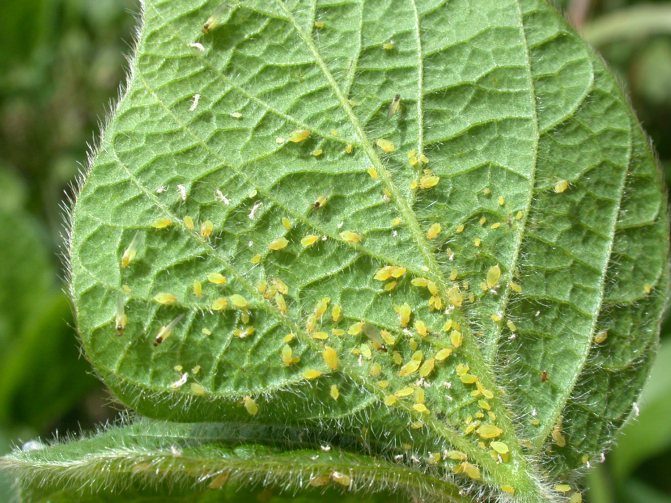

The most common is the green aphid; it is most often attacked by:
- All kinds of fruit trees or shrubs.
- Chrysanthemums, garden roses.
- Most of the non-poisonous indoor plants.
Also, very often you can find aphids with a black color, the basis of its diet is most often made up of:
- Various types of wildflowers are primarily cornflowers.
- Legumes.
Ways to enter the house
The female penetrates into the shelter on the clothes or shoes of people, in the fur of pets. If there are ants in the house, then more attention should be paid to the flowers. Insects feed on dead aphids, so they transfer pests to healthy plants. Parasites can easily enter housing from an open window or door.
The flower aphid lays eggs in the ground, so you can not use street soil for transplanting indoor species. One individual in a bouquet is enough to destroy the entire decorative collection. Often, pests enter the dwelling with seedlings, cut branches, rarely with vegetables (cabbage, lettuce).
Features of getting rid of the garden
Some of the things you can do to get rid of aphids in your garden are discussed below:
- Differentiation of different types of plants. You can plant options attractive to aphids at a considerable distance from those crops that need additional protection from pests. The presence of begonias, nasturtiums or sleeping poppy on the site is likely to distract the attention of these insects from other plants. Of the trees, pests prefer to settle on viburnum or linden, if most of the population is concentrated on these species, then it will be much easier to find and destroy it.
- Sparrows, tits, kinglets, robins and some other breeds of small birds are very often hunted for aphids, as they are ideal food for chicks. In the presence of large populations, birds can themselves pay attention to the site and assist in the destruction of pests, but sometimes they need to be additionally attracted, for example by installing feeders.However, it must be borne in mind that many of them feed on the fruits of trees, so they can both help and harm.
- Fertilizers, ohespecially the nitrogen type should be used with extreme caution, as feeding them to plants can lead to a significant proliferation of aphids, the attention of which will be attracted by the abundance of young and fresh greenery.
Consequences of the defeat of aphids
Parasites actively feed, therefore weaken plants. In places of mass accumulation, the plates are deformed, covered with a span and fall off. The sticky thin layer becomes an excellent medium for the development of sooty fungus and infections.
Affected specimens do not bud. The opened flowers quickly wither, darken and crumble. If aphid infestation on plants is not treated, the problem will spread to neighboring pots. The longer the bugs are ignored, the harder the resuscitation is. In advanced cases, decorative crops die.
Mechanical methods of processing plants
If traces of aphid exposure are noticed on young foliage (twisting, thickening or brown color), then such plates should be immediately cut off and burned. Of the advantages of this method, one can note the one hundred percent elimination of aphids and the fact that new shoots grow quickly in place of the torn leaves,
Important!
White aphids are very dangerous for indoor plants, as they can destroy all flowers in the house. If you cannot cope with the problem yourself with folk remedies, it is recommended to purchase ready-made chemicals.
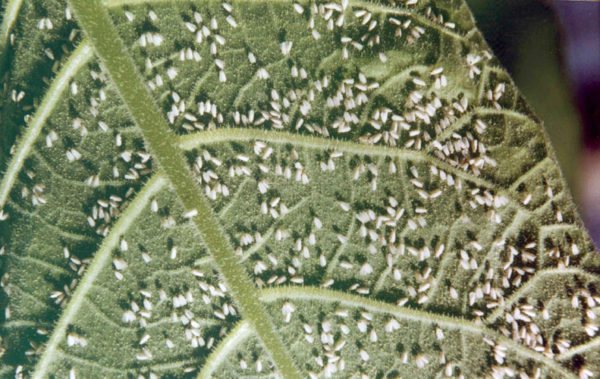

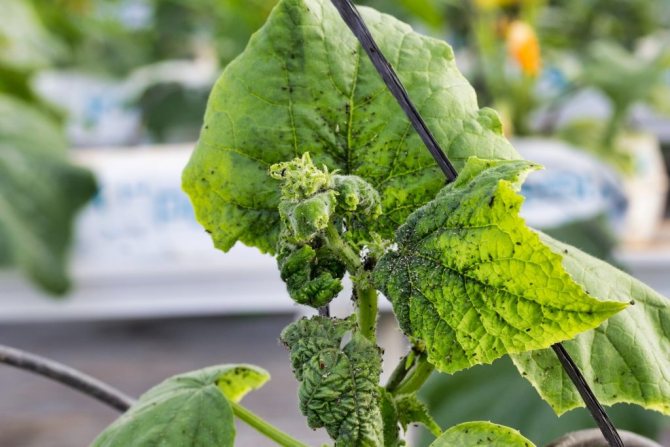

Aphid chemicals
If aphids appear in the room, insecticides will help fight the parasite. When, after processing, toxic drugs enter the body, they block nerve impulses. To completely eradicate pests, you need to choose the right poison.
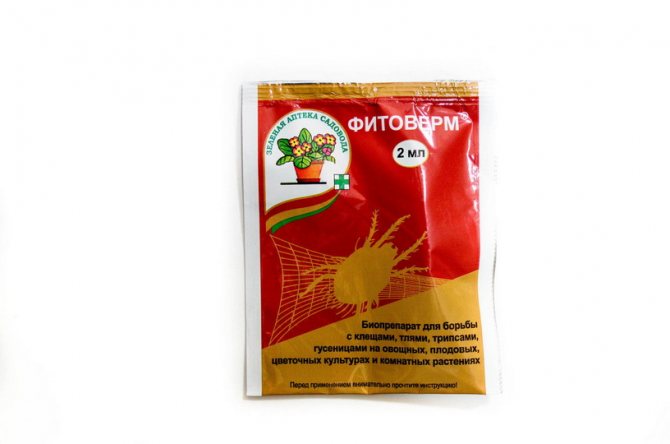

Fitoverm
A biological insecticidal agent for aphids on indoor plants was made on the basis of microorganisms. If pests appear, then regular treatments will help kill. After the first event, a pause of 6 days is maintained, then the procedure is repeated. In the first 96 hours, adults die, then it is necessary to eradicate the young.
The working solution is prepared from 0.5 l of water and 1 ampoule of the drug. The liquid must be poured into a spray bottle, generously sprayed with green parts, stems. If the invasion is strong, then the affected areas are manually wiped with a sponge dipped in medicine.
Aktara
An effective remedy for aphids destroys many types of insects not only in the apartment, but also in the greenhouse, vegetable garden and garden. The chemical blocks the functions of the nervous system, leading to rapid paralysis and death. If you treat the plant with Aktara, then the protection lasts for 3 weeks. The insecticide shows good results when irrigated - up to 2 months.
To get rid of aphids on flowers at home, you need to prepare a toxic liquid. Dissolve 8 g of the drug in 1 liter of water. You need to spray the plants on the street, balcony or in the bathroom. When applying root, it is worth watering the ground, wiping the windowsill on which the "patient" stood. The poison lasts 20 days, then the event is repeated for the surviving and grown parasites.
Prevention of the appearance
In order not to waste time and energy on removing aphids, it is recommended to take a number of measures in advance that can help prevent the appearance of these pests:
- Exterminate ants in the garden and destroy anthills, since these types of insects exist in symbiosis. Ants very often protect aphids, hide them in their shelters and transfer individual individuals from one plant to another.
- Always inspect the seedlings carefully before planting.to immediately eliminate already infected plants and prevent pests from spreading throughout the site.
- Sprinkle the paths between the beds and the area around the beds with wood chipsbecause such an environment will attract earwigs that exterminate aphids.
- Plant onions on the site, garlic, lavender, thyme and other plant species that repel aphids.
- Carry out chemical treatment of plants with various preparationsthat are capable of providing a protective effect.
Folk ways
In room conditions, poisonous drugs are toxic not only for parasites, but also for warm-blooded animals. Safe ways of fighting do not accumulate in tissues, they help from aphids without chemistry. Folk recipes, with regular use, can permanently remove small pests.
Water
If a plant eats aphids, then a minor infestation is washed off in the shower. Every day, the pots are placed in the bathtub, abundantly irrigated with running water. So that excess moisture does not damage the flowers, you need to cover the ground in the container with polyethylene. Clusters are pressed with hands, wiped with a wet sponge.
Aphid soap solution
Tar or laundry soap is a powerful remedy for aphids in houseplants. The drug covers the foliage and stems of indoor crops with a thin film, reduces adhesion. An alkaline reaction destroys the parasite's protective wax layer, resulting in death by exhaustion. 10 g of raw materials are added to 1 liter of water, poured into a sprayer. During the procedures, they try not to get into the substrate.
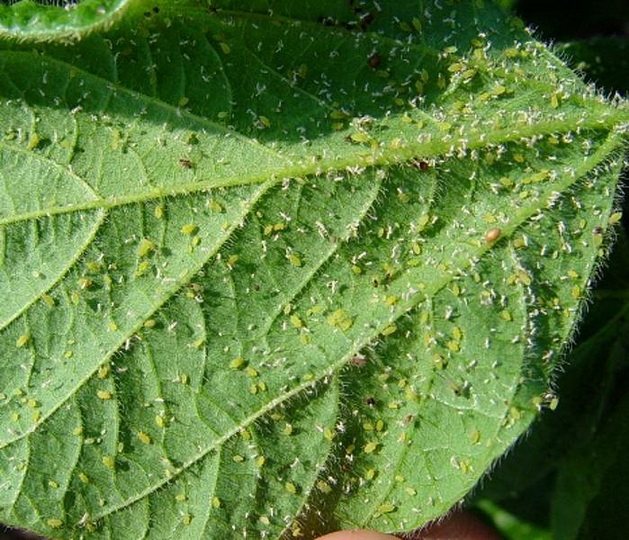

Infusion of zest
Many novice farmers do not know how to deal with folk remedies if aphids have appeared on indoor flowers. The citrus aroma is unpleasant for pests, so the recipe with fresh zest is used to repel parasites. To prepare a solution for spraying, 40 g of raw materials are poured with a liter of boiling water, insisted for 3 days.
Soap-soda mixture for aphids
Sodium bicarbonate is used to treat flowers against insects. The tool instantly kills adults, reduces the number of clusters on the green parts. Dissolve 2 tablespoons of soda in 2 liters of liquid, add 40 ml of soap. After mixing the components, spraying is carried out or the pests are washed off by hand with a sponge.
Infusions from aphids on tops
At home, chemicals against aphids are not always legal. The tops of potatoes and tomatoes have insecticidal properties. Grind 500 g of fresh raw materials, pour in a liter of water and simmer for 30 minutes. After cooling, the liquid is decanted from plant debris. Adherence to foliage is improved by adding a spoonful of soap.
Vegetable infusions
To get rid of aphids on indoor flowers, decoctions of garlic, onions or hot peppers are used. The crushed head or 3 pods are poured with a glass of cold liquid, left for 4 hours. The emulsion is sprayed or wiped on the affected areas.
Features of the pest
Parasites and pests can spoil the appearance of the plant and even cause death. One of the most dangerous parasites for indoor plants is aphids. From this harmful insect, flowers can suffer from both an experienced and a novice grower.
Important!
Aphids can greatly harm any varieties of flowers, because in addition to the fact that it sucks the juice from the plant, it is also considered the main carrier of dangerous viruses.
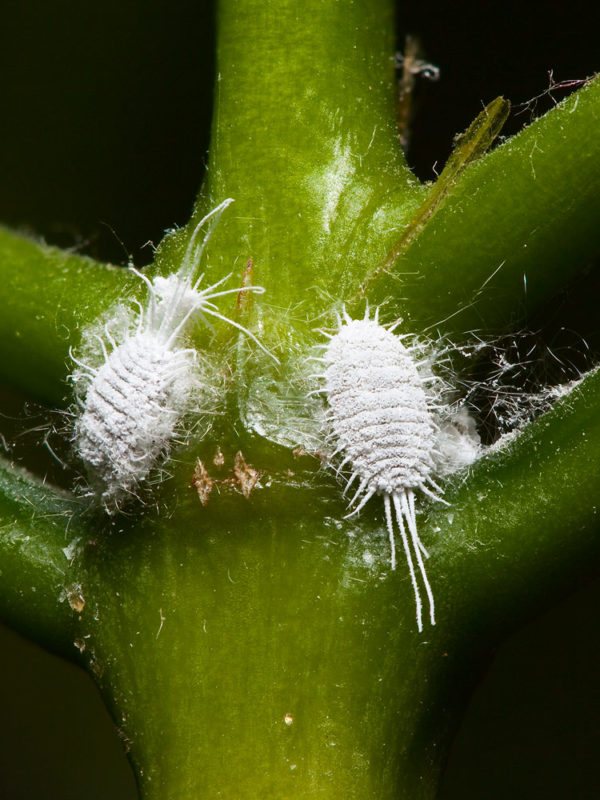

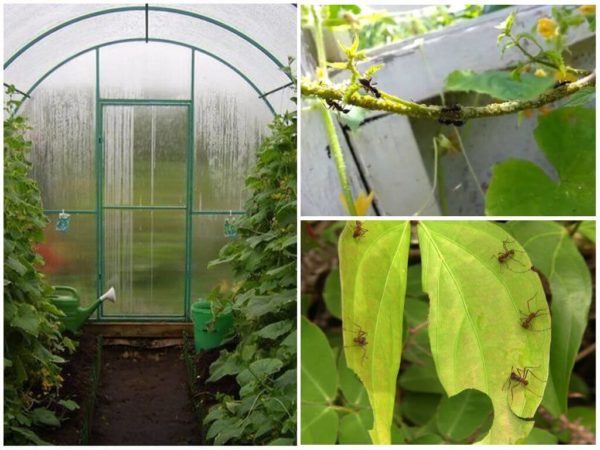

The most efficient industrial production tools
Against the pest, preparations of the contact-intestinal, as well as the systemic mode of action are used.
Contact chemicals immediately after application give a visible effect, as they act directly on the pathogen. They are applied by spraying onto the leaf mass. They require repeated treatments, according to the instructions. These include: Iskra, Intavir, Aktellik, Intavir, Fufanon, Fitoverm.
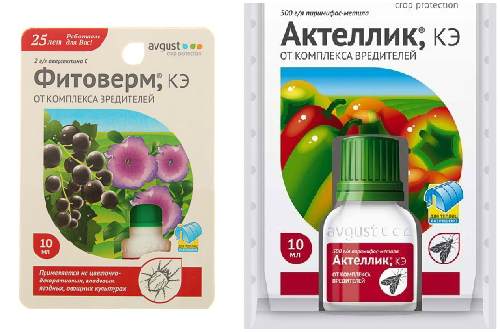

Systemic drugs penetrate the tissues of indoor crops through the roots, during watering, making the cell sap toxic to the sucking insect. Substances have a long duration of action - about three weeks. With their help, it is possible to easily destroy aphids without additional labor costs: Aktara, Iskra gold, Bi-58 new.
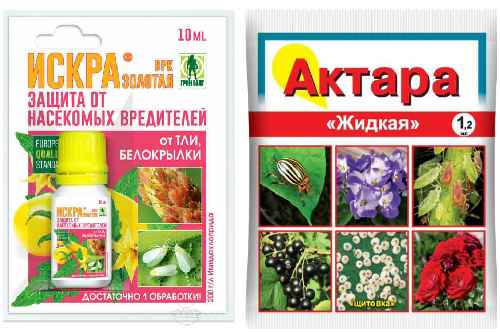

Purchased funds
Purchased products guarantee effective pest control. At the same time, it is possible to use chemical or biological agents. They differ in the principle of action, and the result will be the same - the elimination of aphids.
Chemical
Chemicals or insecticides can effectively fight both the aphid itself and its eggs. It is worth considering that insecticides have some effect on the plant, so their choice should be approached very responsibly. There are a huge variety of chemicals on the market, among the most effective and common are the following:
- Aktara. This is a strong product that is positioned by the manufacturer as safe for plants. It is optimally suited for the treatment of foliage of fruit crops.
- Inta-Vir. The product is sold in powders and tablets. It is effective for the destruction of not only aphids, but also some other pests, namely: moths, cherry flies, leaf rollers, thrips. Before use, the substance is dissolved in water, following the recommendations on the package.
- Tanrek. It is a common remedy that effectively removes aphids and also prevents their subsequent appearance. The retention of the result varies from 14-20 days to 30-35 days, depending on how much rain has passed during this time.
- "Decis Profi". This remedy is most effective in removing aphids from the apple tree. It must be diluted in 10 liters of water (only half a gram of the product is taken for this amount). After processing the apple tree, the result lasts for about one month.
- "Commander". It is a systemic insecticide that can be used on any plant. The product is sold in a concentrated form, therefore, it must be diluted with water before use. The effect after treatment lasts for 30-45 days. It is important to remember that the product is dangerous for bees, therefore it is not recommended to treat flowering plants with it.
- "Prestige". This is one of the most common drugs that can be found in almost any specialty store. Its main advantage lies in the fact that the agent has both insecticidal and fungicidal properties.
- "Coragen". After processing the plants, the agent begins to act within a day, maintaining the effect for 3-4 weeks. The main advantage of the drug is that it does not affect worms and pollinators in any way, allowing them to exist normally.
- "Double effect". It is an insecticide from. It affects the pest upon contact or if it enters the insect's body. The remedy is very common due to the fact that it is able to provide comprehensive protection for the plant.
It is important! Insecticides are recommended for treating plants in early spring, even before the buds begin to bloom. In this case, they will be most effective.
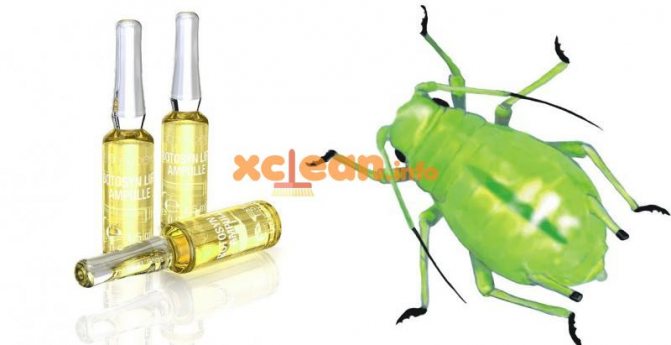

Biological
Biological agents, including fungicides, are no less effective than chemical agents. The most common options include the following:
- "Jaguar". It should be used for cereals and legumes.
- Aktofit. This agent, when processing plants, leads to the fact that the aphids lose their ability to feed. As a result, after 2-3 days the insects die.
- "Fufanon". It is an organophosphate agent that guarantees effective removal of aphids from horticultural crops.
- "Entobacterin". Plants need to be treated with this tool on hot summer days, since its maximum effect begins when the temperature reaches 30 degrees Celsius. In addition, the drug takes effect only a week after treatment.
- Ftoverm.It is a versatile preparation that is suitable for use in the garden, in the garden, indoors. They can even treat indoor plants from aphids.
It is recommended to treat plants with fungicides in the evening or in the morning. At the same time, the weather should be calm and calm outside. Processing must be carried out at least two weeks before harvesting. For biological compounds, this time is reduced to one week.
It is important! It must be remembered that aphids are capable of developing immunity to a particular agent. That is why the preparation for treatment must be changed regularly.
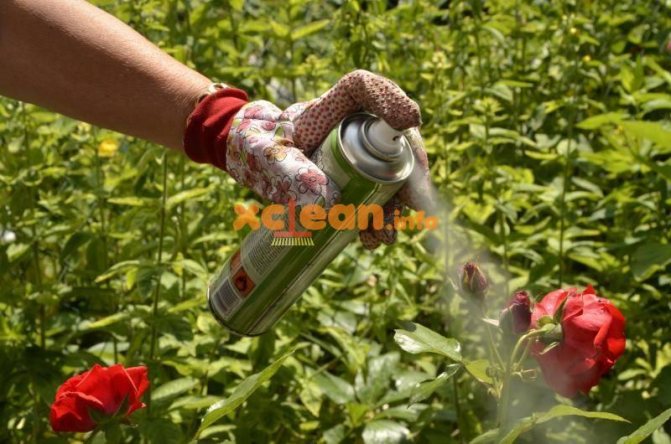

Precautions
To protect your flower plantings from aphids, it is necessary to carry out preventive measures:
- During the warmer months, from March to September, regularly inspect your plants for aphid infestation.
- Ventilate the room regularly.
- Keep purchased plants in quarantine for some time, separately from other indoor flowers. Observe, at the slightest suspicion of the presence of parasites - take action.
- Place decorative crops in well-lit, warm areas.
- Remove dried leaves and buds, water the soil, cut off yellowed leaves.
- If you only see small aphids on flower buds, cut them off.
- In summer, place sticky traps near windows and vents to attract sucking parasites with their scent.
What do the professionals offer?
Performing tasks related to the destruction of dangerous insects is a matter of professionals. It is they who can provide a total cleanup of the site from parasites with a guarantee of protection of the area from a new visit by uninvited guests a few months after the expiration of the validity of the drugs used.
In addition to specialized insecticides, professionals also use an additional exposure to a finely dispersed spray that generates the so-called "cold" and "hot" fog. Pesticides in the form of solutions are supplied here under pressure, allowing for high speed and efficiency of the treatment being carried out. But, most importantly, the vaporous condensate evenly covers various parts of the plant, facilitating the penetration of the product even into hard-to-reach places.
Another important point is the possibility of using insecticides that are not dangerous to humans and animals. Moreover, if necessary, specialists can select special products that are safe for the useful inhabitants of the garden or do not contain substances to which the owners of the site have allergic reactions.
Photo
Take a look at what the insect looks like in the photo:
Signs of defeat
Signs of plant damage by aphids are standard, regardless of the type of insect. These include the following:
- underdevelopment of fruits is observed;
- the plant dries up;
- you can see the deformation of the branches;
- the leaves turn yellow and curl into tubes or into a shape resembling a house;
- a sticky film appears on the surface of buds and leaves (it usually has a white or slightly yellowish tint).
If the culture is weakened by the influence of aphids, it becomes very vulnerable to any disease. The pest causes colossal damage to horticultural and horticultural crops in early summer. At the same time, active reproduction of insects occurs, which leads to the appearance of offspring with wings. This gives aphids the opportunity to move over time to a healthy crop and harm it.
By the way, aphids exist in symbiosis with ants. The insect will secrete honeydew, which is called a "span". This is a sweet substance that ants love very much. In return, they protect and transfer aphid larvae to other plants. That is why it is recommended to immediately check the plants for aphid infestation if ants are bred on the site.
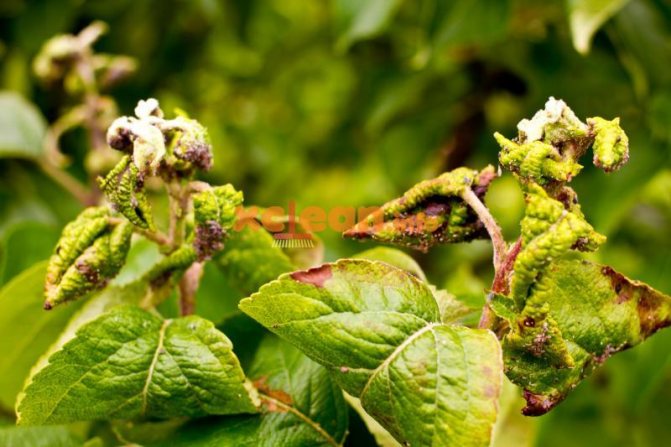

More about the hazard
Aphids are a pest that feeds on plant sap. During the "meal", chipped holes are left on the plant.Roses, cyclamens, fuchsias, orchids and hibiscus are most commonly at risk. It is almost impossible to determine exactly which species launched the invasion of your plants - there are more than 4 thousand species of these pests. Aphids can easily adapt to their environment - so it is difficult to get rid of insects.
If you believe that there are no insects in an enclosed space, and nothing threatens the flowers, then this is a serious misconception. Usually aphids are divided into two types - winged and wingless. The former are a kind of "scouts", they move and infect other plants. Wingless individuals form huge colonies - one female is capable of producing up to one hundred larvae at a time, and they reproduce at a tremendous rate (up to 20 generations per season).
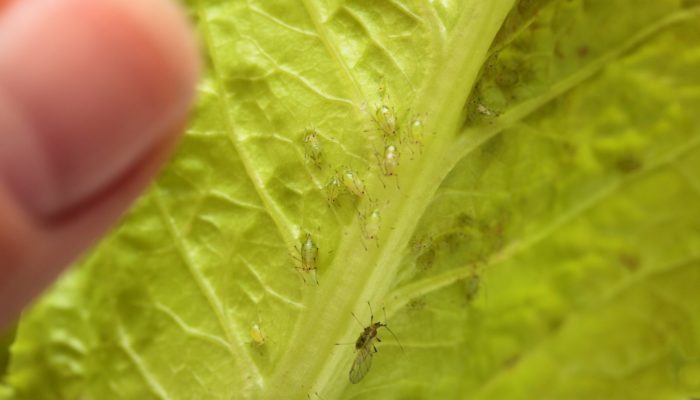

The size of an adult can vary from 0.5 to 7 mm, the largest of all is a female. They practically do not move, and it is quite difficult to spot aphids. As a rule, you can find white or green pests. Pests live well at home, so the appearance of aphids is a big problem that needs to be dealt with immediately.
Best defense is attack
Prevention will help you avoid the appearance and reproduction of pests in your home. First of all - carefully examine all suspicious buds and leaves. Sometimes removing them in time can save the flower. Do not keep bouquets close to indoor plants, and remove new flowers in pots for a week from those that have already taken root. Avoid heat and stuffiness, and hang a small net on the vents. A dying plant that can no longer be saved should be thrown away, and instead of it put fragrant pelargonium, successfully scaring away intruders.
Preventive measures
In order to avoid the appearance of a pest colony, the hostess is advised to follow simple care rules:
- Examine the plants two to three times within 7 days.
- When insects appear, do the treatment with folk, biological, chemical means.
- The purchased plants should be kept in isolation for a week, removed to another room.
- Observe cultivation techniques so that the flowers have immunity to diseases and pests:
- for feeding;
- watering;
- replacing soil;
- transplant;
- temperature regime.
- Use mint as a repellent.
On summer days, after airing, taking out to the balcony, do preventive irrigation, use ladybirds.
Fighting aphids with natural enemies
Aphids can be destroyed not only by various spraying, but also with the help of predatory insects - entomophages. They eat the pest and / or its eggs and thus keep the population under control or completely exterminate it. Entomophages can be bought in specialized stores (many are on the Internet) or you can attract yourself to your site. Often it is this method that allows you to get rid of aphids both in the greenhouse and in the garden forever.
ladybug
This insect is capable of consuming 50-60 aphids per day, and it also destroys mealybugs, ticks and a number of other pests.
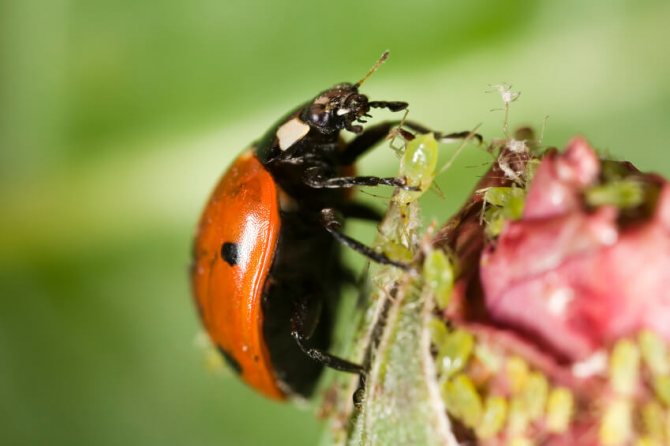

The ladybug, both in adulthood and in the larval stage, is a tireless predator in the fight against aphids
Hoverfly, sirfida (Syrphidae)
The larvae of this species feed on aphids and other soft-bodied pests, including spider mites, keeping their numbers under control. The hoverfly larva eats about 200 aphids per day.
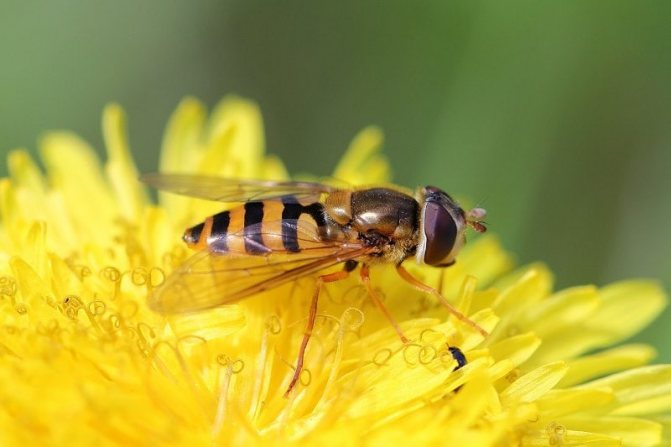

Hoverfly fly larvae, similar to fat caterpillars, eat aphids and many other pests
Green lacewing (Chrysoperla rufilabris)
An adult lacewing feeds on the nectar of flowers, but its larvae, which look like miniature alligators, are real predators. In the larval stage, the insect eats about 600 aphids, as well as other harmful insects and mites.
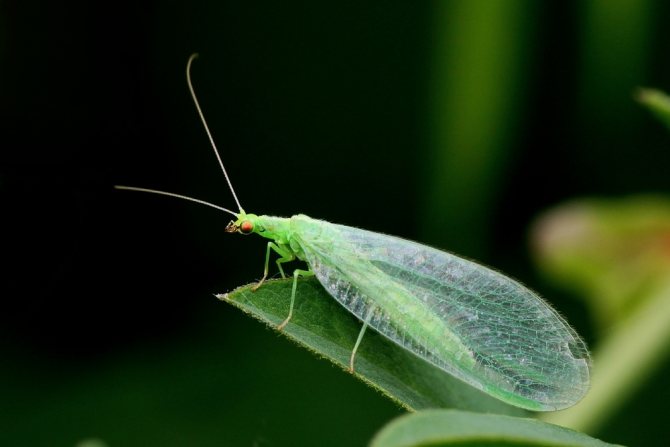

Green Lacewing larvae have the ability to quickly eat aphids
Aphids also feed on:
- some wasps (Aphidius);
- cicadas;
- crickets;
- ground beetles;
- earwigs (pinchers);
- riders.
To attract beneficial insect predators to your site, you should plant dill, fennel, carrots, parsley, celery, dandelion and tansy on it.
How to spray?
A huge number of folk, biological and chemical agents can be used for spraying potato bushes.
All that any gardener needs is to decide which method appeals to him and choose a tool from the list.
Chemical insecticides
- a group of organophosphorus compounds - Aktellik, Marshal, Nurell D, Fufanon;
- synthetic pyrethroids - Intavir, Iskra "Double Effect", Karate, Kinmiks;
- neonicotinoids - Bankol, Biotlin, Calypso, Commander, Confidant, Tanrek.
The most effective are neonicotinoids, because they have pronounced systemic and translaminar qualities.
Biological preparations
Completely natural remedies that are the result of the vital activity of fungi (radiant). Affects the nervous system of aphids, causing paralysis.
- Agravertine.
- Akarin.
- Aktofit.
- Vertimek.
- Lepidocide.
Folk remedies
How to remove aphids with folk remedies? Here is some of them:
- a solution of tar, potash or laundry soap;
- vegetable infusions or decoctions: garlic, onion, tobacco, dandelion, marigolds, chamomile, horse sorrel, hot pepper, dry peels of any citrus fruits, celandine, tomato tops;
- a mixture of iodine with milk;
- Coca Cola American descent;
- alcohol solutions;
- essential oils of cedar, clove, tea tree, lavender;
- suspension from any vegetable oil and water.
Insecticidal attack on garden parasites
Chemical treatment of aphids with household insecticides can significantly reduce the risks of a rapid increase in the number of individuals in the colony. It is important to take into account that the dosage of the product in this case must be clearly verified - otherwise not only pests, but also useful gardeners and even birds may suffer. Processing cannot be carried out during the flowering period. It is forbidden to collect fruits from treated trees and shrubs for three to five weeks after pest control.
Among the effective drugs in this case are:
- biological - among the most popular "Fitoverm" in ampoules with the active substance aversectin, belonging to the category of poisons of the intestinal spectrum of action, causing the death of uninvited guests a few days after contact;
- chemical - mainly based on fenoxaprop and mexil ("Jaguar" and its analogues), as well as organophosphorus compounds based on malathion ("Fufanon").
The range of tools for independent use is quite extensive. Among them, you can also find fumigants - substances used to get poison into the body of aphids through the respiratory system. But the most effective options remain systemic solutions that provide complex impact.
initial stage
If you are accustomed to closely monitoring your plants, then it will not be difficult to notice when aphids appear on home flowers for the first time. In the first stages, it will be enough to crush the female and destroy the eggs, if she has already managed to lay them. Then it is recommended to carefully examine all the plants that stood in the room with the infected flower.
Sometimes it is necessary to prune damaged leaves to prevent aphids from breeding - there is nothing wrong with that. This procedure will not harm the flower too much, because it will be able to recover very quickly. In cases where time has already been lost, and there are too many insects, more radical pest control methods should be used.
How to remove aphids with a detergent solution
A destructive effect on aphids is provided by such a means as washing powder. It must be used carefully, as there is a high risk of causing a burn on the leaves.Due to the fact that all powders have a different composition, you will have to choose a suitable concentration. Experienced gardeners recommend starting with a 1% solution.
Important! Before starting the fight against plant lice, you need to test the selected remedy on one bush. If it remains intact, in a day you can start processing all plantings.
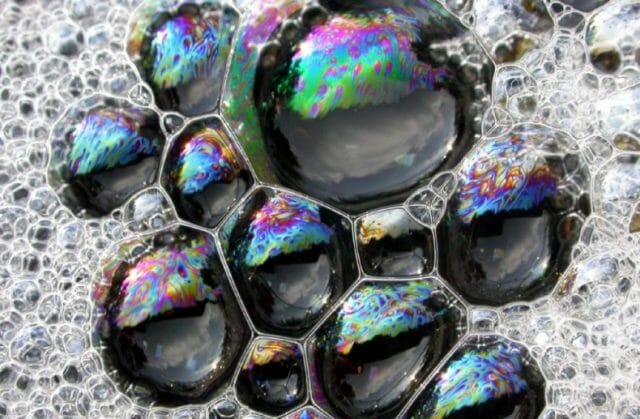

General recommendations for processing with decoctions and infusions
Decoctions or infusions are mostly made from plants that have toxic properties. In high concentrations, they become dangerous for exposed parts of the body, respiratory organs, especially for people with a predisposition to allergies.
Important: When processing homemade mixtures, the same safety precautions must be followed as when using chemicals.
- Spraying is carried out in the bathroom or outdoors.
- Use of personal protective equipment: gloves, mask.
- After the procedure, wash your hands and face well.
With the prepared mixtures, the leaves are thoroughly moistened, especially the reverse side. Wetting is carried out by spraying or dipping into the solution. For better adhesion, it is advisable to add liquid soap - 1 teaspoon per 5 liters of solution, or household, grated 20 gr. After 5 - 7 days, repeat the treatment. The procedure is carried out 3 times.
Currant lesions
The defeat of the currant manifests itself in different ways depending on the type of plant. On pink, red and white currants, you can see galls (swellings that have a dark red and even burgundy color) after the appearance of aphids. On black currants, you can see leaves rolled into tubes and spots.
The use of insecticides is allowed. For example, you can use "Aktara", "Corbafox", "Vofotox". If the plant is in bloom, you can use Fitoverm, which has a more gentle action.
Among folk remedies, you can choose wood ash, which is most effective for currants. How to use it is written in the table above.
